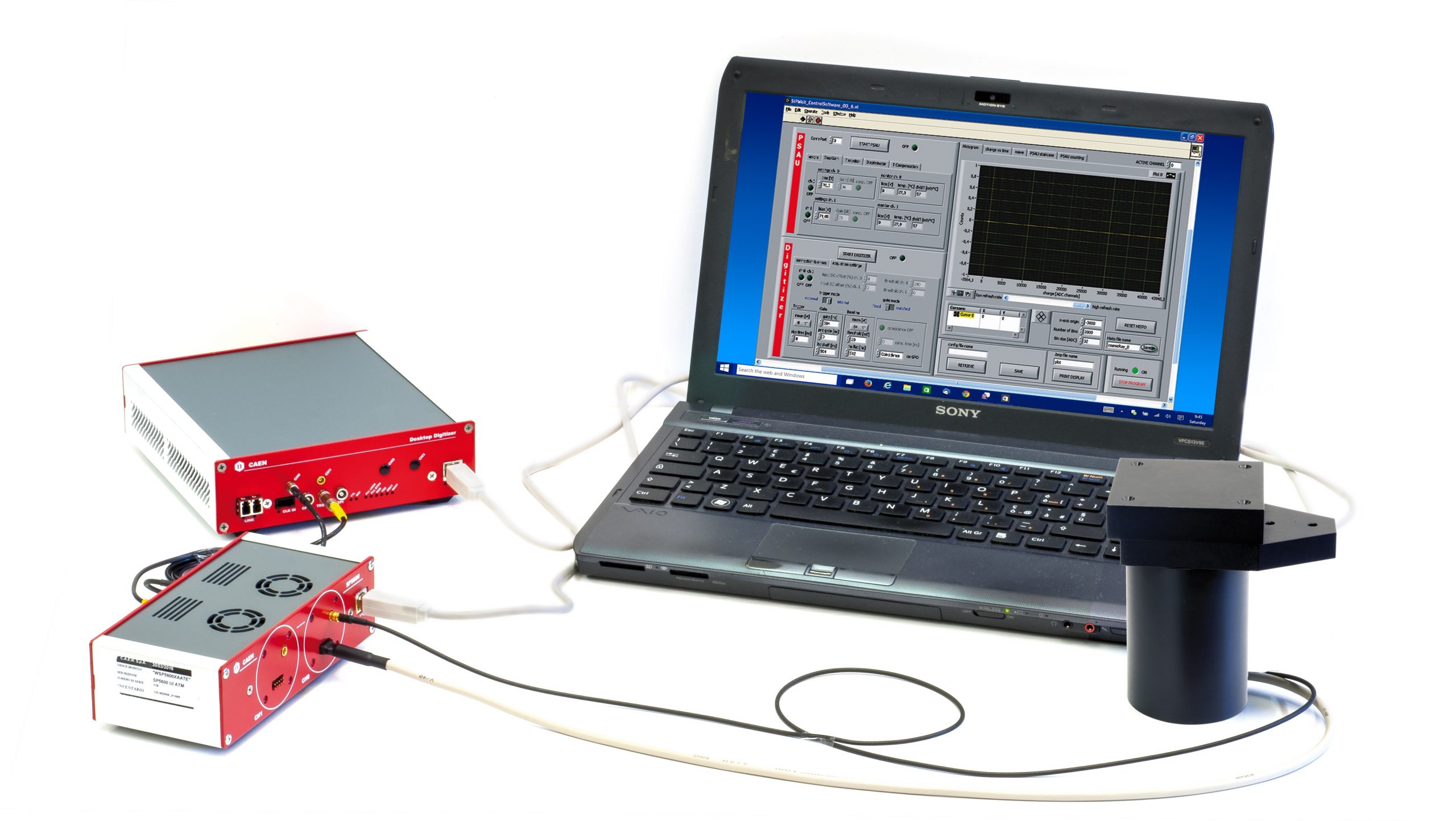| Difficult | Execution Time | Data Analysis | Radioactive Sources |
|---|---|---|---|
| Yes | Yes |
Hardware setup
This experiment guide is referred to the SP5600D educational kit.
Equipment: SP5600D – Educational Beta Kit
| Model | SP5600 | DT5720A | SP5608 | Additional Tool |
|---|---|---|---|---|
| Description | Power Supply and Amplification Unit | Desktop Digitizer 250 MS/s | Scintillating tile | β Radioactive source |
Purpose of the experiment
Estimation of the instrument sensitivity in the measurement of thin layer thickness by β particle attenuation.
Fundamentals
Beta attenuation represents a golden standard in the quality control of paper industry and in the measurement of thin layer thickness. The latter has several applications, including the concentration of fine particulate matter deposited on a filter. The use of high activity sources with relatively soft spectrum and highly efficient detectors guarantees that this technique, used since the 50’s, is yet today a standard.

Experimental setup block diagram
Carrying out the experiment
Insert the β source support in the SP5608 and connect power and MCX cables to one channel of the SP5600. Connect the two channel outputs to DT5720A: the analog output to the channel 0 and the digital output to “trigger IN“ of the digitizer. Use the default software values or optimize the parameters to evaluate the contribution not coming from the β source and choose the discrimination threshold in mV. After that, switch off the power supply, open the SP5608 top and place the β source on the plastic support and close the support top. Switch ON the power supply and measure the counting rate. Repeat the measurement by adding paper sheets.
Results
The industrial results are provided by using high activity β source (1GBq). This experiment allows to estimate the instrument sensibility and the time needed to obtain a certain percentage of sensibility through the attenuation curve of a β source with “student compliant” activity. The results are very surprising: 3σ of confidence level to distinguish one or two post-it in 250 ms and 25 seconds to reach sensibility 10%.

Counting frequency of the β rays as a function of the number of crossed paper sheets


